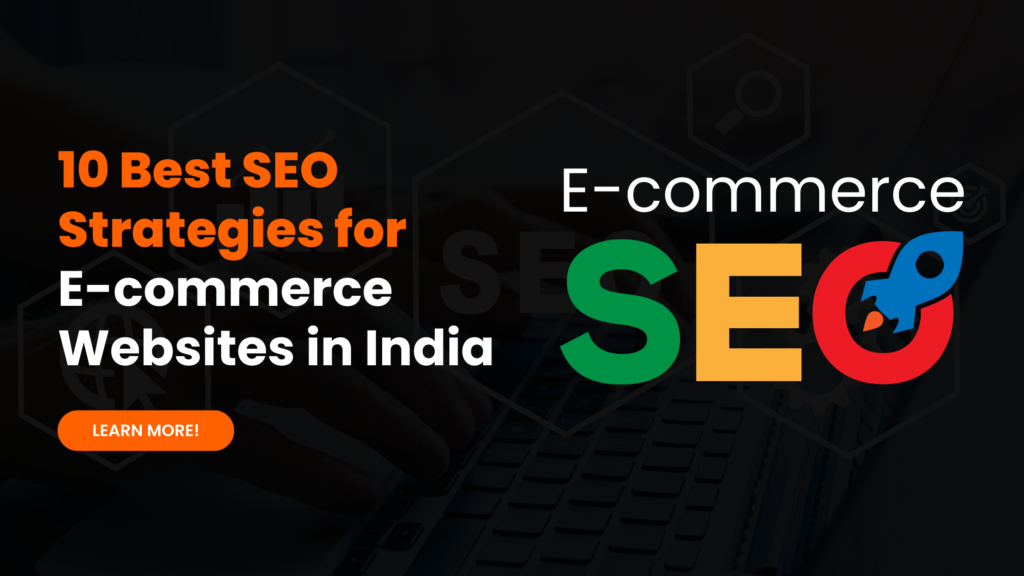There are over 20 million e-commerce sites that exist on the internet, and it is expected that 80-90% of purchases will take place on it. As per the expert’s predictions, in the future, more than 90% of all transactions will occur through online platforms within the next 15-20 years. The significance of SEO cannot be overstated. As we witness the meteoric rise of e-commerce giants like Amazon and Flipkart, it’s clear that success lies not just in quality products and stellar services but in mastering the complexities of e-commerce SEO.
The Role of SEO in E-commerce Success
While SEO is a critical component for any website, its impact is particularly pronounced for e-commerce sites. Unlike traditional stores, online shoppers often turn to search engines rather than specific platforms when seeking products. To thrive in this competitive field, your online store must secure prime real estate on Search Engine Results Pages (SERPs), ensuring robust visibility and attracting targeted traffic.
Unveiling the 10 Best SEO Strategies for E-commerce Success
1. Keyword Mastery for Indian Markets
Keywords are the linchpin of E-commerce SEO. Carefully select keywords that resonate with the Indian audience. Evaluate factors such as search volume, cost-per-click, and user intent. Utilize tools like Keyworddit, SEMrush, Soovle, and WonderSearch to unearth optimized keywords for your site.
Example: For a men’s fashion site in India, target keywords like “ethnic men’s wear online” or “festive wear for men.”
2. Streamlined Site Architecture
Your online store must simplify site navigation with an easy-to-access architecture. Stick to the golden rule: every product page should be reachable in just three clicks from the homepage. Opt for a streamlined structure that enhances user experience and facilitates efficient search engine categorization.
Example: Ensure your site architecture allows users to reach a product page within three clicks for a seamless experience.
3. On-Page SEO Excellence
On-page SEO remains a cornerstone for e-commerce success. Optimize product and category pages with techniques such as meta title and description optimization, short and keyword-rich URLs, schema markup, and strategic internal linking. Prioritize user experience alongside search engine ranking.
Example: Craft compelling meta titles and descriptions that align with product keywords, enhancing visibility on SERPs.
4. Compelling Product Descriptions
Craft unique and compelling product descriptions to avoid content duplicity. Aim for reports exceeding 1000 words, strategically incorporating keywords and sprinkling LSI keywords. Enhance engagement by encouraging users to write product reviews and share their experiences.
Example: Engage users with detailed product descriptions, emphasizing specifications and unique selling points.
5. Optimized Site Loading Speed
Your website should be opened quickly on the user’s device, whether it is a laptop or mobile device. Fast-loading sites secure user engagement and favour with search engines. Optimize your website images without compromising quality to enhance loading speed. A fast-loading website is also a Google ranking factor; swift loading positively impacts search engine rankings as well.
Example: Optimize image sizes without sacrificing quality to ensure a seamless and speedy user experience.
6. Strategic Backlink Building for Indian Audiences
Authentic, relevant backlinks play a pivotal role in e-commerce SEO. Build backlinks through avenues like guest blogging, social media, and strategic partnerships. Ensure that your website backlinks are from trustworthy sources within the Indian e-commerce landscape or relevant websites.
Example: Leverage Guest Blogging to build high-quality backlinks within the Indian e-commerce community.
7. Localized Content and Cultural Relevance
Tailor your content to the Indian audience by incorporating cultural nuances and preferences. Optimize content for local searches and ensure that your offerings align with regional festivals and events.
Example: Create content that resonates with Indian cultural events and festivals, aligning your brand with local sentiments.
8. Mobile Optimization for Indian Consumers
A significant portion of users use the internet on their mobile devices. So, you have to ensure that your e-commerce site is optimized for mobile. So your users can use your website smoothly. A responsive design and mobile-friendly features enhance user experience and positively impact search rankings.
Example: Prioritize mobile optimization to cater to the vast number of Indian users accessing the internet via smartphones.
9. Voice Search Optimization for Multilingual India
Anticipate the rise of voice searches in India. Optimize your content for voice queries by understanding the nuances of language and accents prevalent in different regions of the country.
Example: You can optimize for voice searches in multiple languages in India to cater to its diverse linguistic landscape.
10. Social Media Integration with Indian Platforms
In the current social media age, As per the Statista report Social media usage in India. India has more than 600 million active internet users and the number growing rapidly. Almost every internet user uses social media in their day-to-day life to share their memories or connect with their friends and family members. Also, social media plays a big role in branding and attracting your potential customers via these platforms as per users’ preferences and interests.
Your social media integrated SEO strategy with a robust presence on Indian social media platforms. Leverage social signals to enhance search rankings and engage with the Indian audience through culturally relevant content.
Example: Run promotions and engage with the Indian audience through popular social media platforms like Instagram and Facebook.
In the dynamic and diverse market of Indian e-commerce, mastering these 10 SEO strategies is not just a choice; it’s essential for success. These are some important tactics for thriving in the competitive digital landscape. Optimize your e-commerce platform, align with the preferences of the Indian audience, and propel your brand to the forefront of the digital market. The future of e-commerce in India is yours to conquer!

